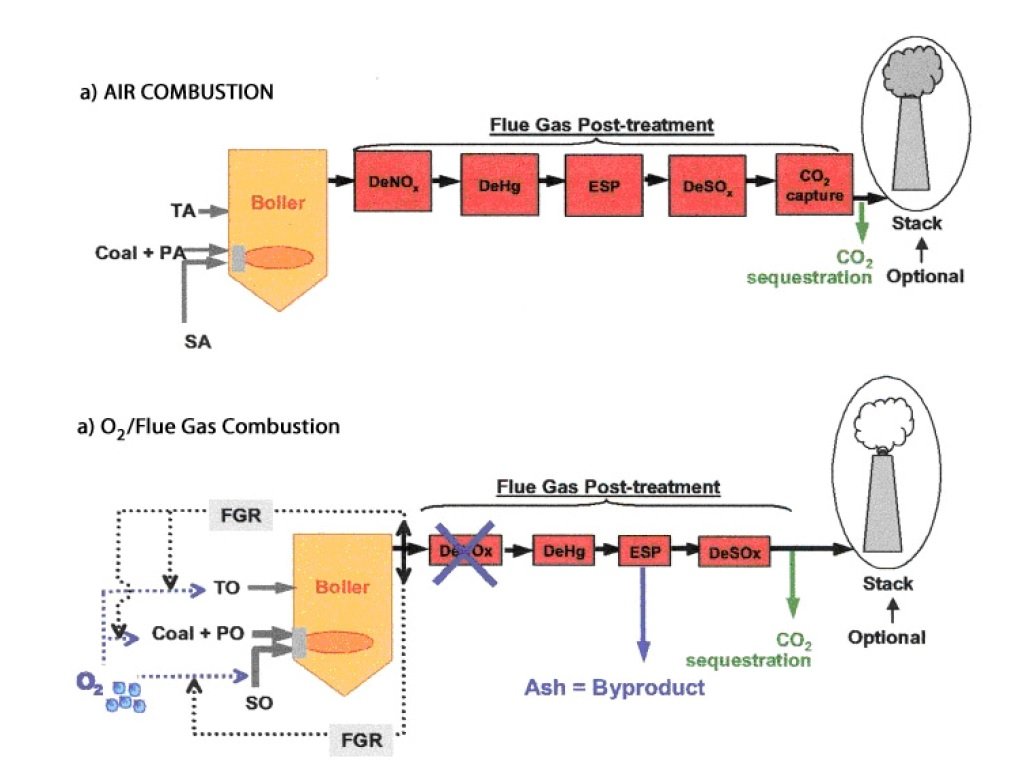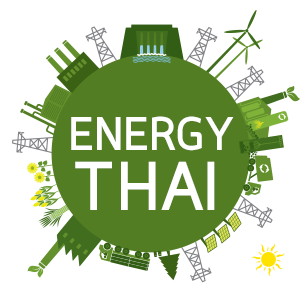บทสรุปเทคโนโลยีโรงไฟฟ้าคู่สิ่งแวดล้อมทศวรรษนี้
o การเพิ่มประสิทธิภาพการผลิต คือ วิธีการที่ใช้ได้ในเชิงพาณิชย์ และต้นทุนต่ำที่สุดในการจัดการสิ่งแวดล้อม ลดมลภาวะรวมถึงการลดก๊าซคาร์บอนไดออกไซด์ (CO2)
o ประสิทธิภาพการผลิตไฟฟ้าสามารถเพิ่มอย่างต่อเนื่องโดยการพัฒนาเทคโนโลยีการเผาไหม้ (Combustion) และการแปรสภาพเป็นก๊าซ (Gasification)
o ประสิทธิภาพของเทอร์โมไดนามิกส์ของการผลิตไฟฟ้าสามารถเพิ่มได้โดยการเพิ่มความร้อน เพื่อช่วยเพิ่มความดันและ/หรือเพิ่มอุณหภูมิทั้งวงจร Rankine (Rankine Cycle) และวงจร Brayton (Gas Turbine Combined Brayton-Rankine Cycles) โดยการพัฒนาเทคโนโลยีวัสดุในระบบกังหันไอน้ำ (Steam Plants), เทคโนโลยีระบายความร้อน (cooling technology), และเทคโนโลยีการเคลือบผิววัสดุกันความร้อน เซรามิกสำหรับโครงสร้างกังหันก๊าซ (thermal barrier coatings, and new ceramic materials for structural parts of gas turbines)
o โรงไฟฟ้าพลังความร้อนร่วมเชื้อเพลิงก๊าซธรรมชาติ (Natural Gas Combined Cycle plants) คือโรงไฟฟ้าที่มีประสิทธิภาพสูงที่สุด ความสะอาดมากที่สุด และต้นทุนการลงทุนต่ำที่สุด แต่อย่างไรก็ตาม การที่ราคาเชื้อเพลิงก๊าซธรรมชาติสูงและควบคุมยากนั้น ทำให้นักลงทุนมองหาช่องทางอื่นในการลงทุน เพราะอาจทำให้ต้นทุนการผลิตสูงมาก และไม่ทำกำไรที่เหมาะสมแม้กรณีเดินเครื่องแบบเต็มเวลา 24 ชั่วโมง (Baseload) ก็ตาม
o การพัฒนาเทคโนโลยีถ่านหินสะอาดมีระดับความน่าสนใจสูงมาก เนื่องจากแหล่งเชื้อเพลิงถ่านหินมีความมั่นคง คุ้มค่าเชิงเศรษฐกิจการลงทุน และสามารถเดินเครื่องภายใต้การควบคุมด้านสิ่งแวดล้อมที่เพิ่มสูงขึ้นในปัจจุบัน
o การปรับปรุงกระบวนการก่อนการเผาไหม้ (pre-combustion) และการเพิ่มการดักจับก๊าซคาร์บอนไดออกไซด์หลังการเผาไหม้ (post-combustion) นั้น ช่วยลดมลภาวะและก๊าซคาร์บอนไดออกไซด์ ได้อย่างเป็นนัยสำคัญ
o โรงไฟฟ้าประเภท Pulverized coal (PC), Circulating Fluidized Bed (CFB) และ Integrated Gasification Combined Cycle (IGCC) ตามเทคโนโลยีที่มีในปัจจุบัน มีประสิทธิภาพประมาณ 8% หรือ 25% สูงกว่าโรงไฟฟ้าปัจจุบันที่เดินเครื่องโดยเฉลี่ย และมีสมรรถนะการควบคุมด้านสิ่งแวดล้อมที่สูงขึ้น
o การลดลงของมลภาวะเป็นผลจากการผลิตที่มีประสิทธิภาพสูงขึ้น ถ้าแสดงปริมาณมลภาวะเหล่านั้นเทียบกับหน่วยผลิตไฟฟ้า (per kWh) ของโรงไฟฟ้าจะเห็นได้อย่างชัดเจน แต่การแสดงตามมาตรฐานสิ่งแวดล้อมแบบปัจจุบัน (lb/MBtu หรือ g/Nm3) จะซ่อนความก้าวหน้าด้านการพัฒนาประสิทธิภาพการผลิต ทำให้ไม่เห็นความสำคัญของการพัฒนาด้านเทคโนโลยีการผลิตในขั้นสูง
o โรงไฟฟ้าถ่านหินแบบ “zero emission” ในอนาคตจะต้องรวมระบบการดักจับและกักเก็บคาร์บอน (Carbon capture and Storage: CCS) โดยเทคโนโลยี CCS คาดว่าจะใช้งานเชิงพาณิชย์ได้ประมาณกลางทศวรรษนี้ หรือปีนี้
o ก่อนที่ CCS จะนำเข้าใช้งานจริง แนวทางที่เกิดประสิทธิผลเชิงปฏิบัติในการลดมลภาวะจากโรงไฟฟ้าถ่านหินใหม่ คือการเดินเครื่องอย่างมีประสิทธิภาพที่สุด โดยคำนึงถึงทั้งต้นทุนและความพร้อมจ่ายไฟฟ้าที่เหมาะสม
o ในระยะอันใกล้นี้ ทางเลือกการผลิตไฟฟ้าด้วยถ่านหิน ขณะที่ยังไม่มีเทคโนโลยี CCS คือ PC/CFBC แบบ Supercritical (SC) หรือในแง่ PC รวมแบบ Ultra Supercritical (USC) ด้วย ขณะที่เทคโนโลยี IGCC มีความแตกต่างด้านต้นทุนเล็กน้อยระหว่างแบบรวม/ไม่รวม Capture plant อย่างไรก็ตามโรงไฟฟ้าแบบ IGCC แบบไม่รวม CO2 Capture plant ยังไม่คุ้มค่าเชิงเศรษฐกิจการลงทุนเมื่อเปรียบเทียบกับ PC และ CFBC ในปัจจุบัน
o IGCC แบบรวมเทคโนโลยี CCS ดูเหมือนจะเกิดขึ้นและเป็นทางเลือกคู่กับเชื้อเพลิงถ่านหินอย่างยั่งยืน อีกทั้งยังมีข้อดีในการพัฒนาเป็นแบบ Hybrid Fuel Cell/GT/Steam coal plant ด้วยประสิทธิภาพสูงถึง 60% ในอนาคตซึ่งเรียกได้ว่า “Near Zero Emission” ทีเดียว
o เทคโนโลยีหลักของการใช้ถ่านหินในการผลิตไฟฟ้า แบบรวม CCS มี 2 ประเภท คือ โรงไฟฟ้าแบบ IGCC แบบการแยกก๊าซฯ ก่อนกระบวนการเผาไหม้ (pre-combustion capture), PC กับกระบวนการดักจับหลังจากเผาไหม้ (post-combustion capture), และ Oxy-fired PC หรือ CFBC Flue gas clean up เมื่อ Oxy combustion plant ต้องพัฒนาให้ได้มาตรฐานเรื่องกระบวนการอัดก๊าซฯ การขนส่งก๊าซฯ และการกำจัดกักเก็บ (sequestration) ซึ่งปัจจุบันในมุมนี้ยังต้องได้รับการพัฒนา เพื่อให้เทียบเคียงได้กับ Gas Turbine Entry ของโรงไฟฟ้าประเภท IGCC อย่างไรก็ตาม ระบบกำจัดแบบ Dry flue gas โดยไม่มีระบบแยก CO2 จะทำให้ Oxy combustion ติดตั้งกับ SC/USC plants เทียบเคียงได้กับ IGCC
o ประเด็นเรื่องต้นทุนการผลิต กระบวนการดักจับ CO2 ที่เพิ่มเข้ามาในโรงไฟฟ้า เกี่ยวข้องโดยตรงกับสมรรถนะ และการลดลงของประสิทธิภาพการผลิตไฟฟ้า ดังนั้นสิ่งสำคัญที่ซ่อนอยู่ คือ ประสิทธิภาพการผลิตของโรงไฟฟ้าควรต้องพัฒนาให้สูงมากที่สุดเท่าที่จะทำได้
o การเปรียบเทียบต้นทุนการผลิตของโรงไฟฟ้าถ่านหินใหม่ รวมการควบคุมด้านสิ่งแวดล้อมนั้น ต้นทุนต่อหน่วยผลิต (Cost of Electricity: COE) และ Output จะลดลงตามประสิทธิภาพการผลิตที่เพิ่มขึ้น โดยไม่ขึ้นกับการเรียกเดินเครื่องตาม Marginal Cost จากโรงไฟฟ้าที่มีประสิทธิภาพดีที่สุด และไม่ขึ้นกับโรงไฟฟ้านั้นๆ มี/ไม่มีระบบดักจับก๊าซ CO2 แต่อย่างใด

แหล่งข้อมูลอ้างอิง: High Efficiency Electric Power Generation; The Environmental Role
โดย János Beér Massachusetts Institute of Technology, Cambridge, MA 02139 USA
Concluding remarks
o Efficiency improvement is far the most predictable and lowest cost method to reduce all
emissions including CO2
o Power generation efficiency is steadily increasing with the development and continued
deployment of advanced combustion and gasification technologies.
o The thermodynamic efficiency of power generation can be increased by the addition of
heat to the cycle at increased pressure and temperature in both the Rankine cycle, and
Gas Turbine Combined Brayton-Rankine Cycles, enabled by the development of new,
advanced materials in steam plants, and improved cooling technology, thermal barrier
coatings, and new ceramic materials for structural parts of gas turbines.
o Natural Gas Combined Cycle plants are the highest efficiency, cleanest and lowest capital
cost power plants, but the high and volatile price of natural gas makes them unattractive
for base load operation.
o There is great interest in the continued development and application of Clean Coal
Technologies because of the secure and economic coal supply, and the capability of coal
utilization technologies to comply with increasingly tight environmental controls.
o In addition to combustion process modifications and post combustion cleanup, the
improving efficiency of combustion and gasification cycles are leading to significant
reductions in pollutant and CO2 emissions.
o Presently available PC, CFB and IGCC plants have efficiencies of about 8 percentage
points, or a relative 25% higher than the installed plant average, with correspondingly
higher environmental performance.
o Reductions in emissions as a result of increased efficiency would become clearer if
emissions were related to the output (per kWh or MWh) of the plant. The present system
of input based emission standards (lb/MBtu or g/Nm3) hide the environmental advantage
of efficiency and is not therefore conducive to the choice of advanced, high efficiency
power plants.
o The “zero emission” coal plant of the future will include CO2 capture and compression
for sequestration (CCS), a technology expected to come to fruition in the mid 2020s.
o Prior to the commercial application of CCS, the most cost effective way of reducing all
emissions including CO2 from new coal based power plants is to deploy plants with the
highest efficiency commensurate with cost and availability.
o In the near term, the choice of coal based generating technology without CCS is PC or
CFBC in Supercritical, or for PC also Ultra Supercritical steam cycle. While IGCC has a
smaller cost differential between no-capture and capture plant, IGCC without CO2
capture it is not presently competitive on cost and on availability with PC or CFBC
plants.
o IGCC with CCS technology is likely to emerge as the eventual sustainable coal fuelled
option; it has the advantage of providing the base for the future Hybrid Fuel
Cell/GT/Steam coal plant with 60% cycle efficiency and near zero emission.
o The primary coal based electricity generating technologies with CO2 capture (CCS) are
IGCC with pre-combustion capture, PC with post-combustion capture, and oxy-fired PC
or CFBC Flue gas clean up for Oxy combustion plant has to satisfy standards for
compression, pipeline transportation and sequestration that are less stringent than those
for gas turbine entry in IGCC. The sequestration of the dry flue gas without CO2
separation could make Oxy combustion in SC and USC steam plants competitive with
IGCC.
o Additional to increased plant cost, CO2 capture involves significant performance and
efficiency reduction, and it is essential therefore that the underlying plant efficiency be as
high as possible.
o Cost comparisons of advanced coal based power generating systems show that not
withstanding the marginally higher first cost of higher efficiency plants, the COE and the
output based emissions are reduced as the efficiency increases in plants both without and
with CO2 capture.
